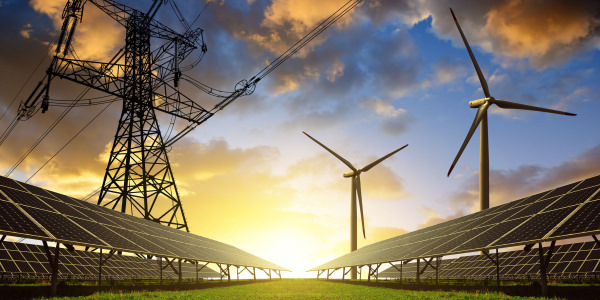Electricity Decentralisation – Where is the market heading?
Published on 22nd July, 2019
Decarbonisation and the resulting growth of renewable sources of electricity are key drivers in the decentralisation of the UK electricity system. Part of the reason for this is that technological progress has been driving down the lifetime costs of renewable generation technologies thus making decentralisation increasingly viable. Alongside this trend is a growing desire for both power producers and consumers to take more control over their energy choices and to be less subject to the constraints and imposed costs of the traditional centrally controlled electricity system.

Credit: Vaclav Volrab / 123RF
What do we mean by decentralised energy?
The term ‘decentralised energy’ can be defined as energy that is generated by assets that are not connected to the main (high voltage) national grid – it includes energy from waste plants, combined heat and power units, district heating and cooling, micro-renewables plus geothermal, biomass, wind and solar energy. This catch-all definition, while extensive in its coverage from a technology point of view, doesn’t quite capture the real complexity of what is actually happening.
Two points are worth highlighting.
In the first place, defining decentralised energy in terms of production alone doesn’t deal with the important and growing role of consumers in energy localisation.
Secondly, decentralisation is happening at various levels:
- At the commercial level, where businesses are investing in electricity generation capacity and storage. This can be in the form of on-site generation to meet their own consumption needs, as part of an energy from waste process or as stand-alone plant selling either baseload or peaking power into the market on a merchant basis;
- At the community level in the form of consumer co-operatives (green or otherwise), energy efficiency groups, local generation projects, micro-grids and virtual power networks (VPNs).
- At the household/individual level through smart metering, investment in private generation (roof solar etc), or export of power to the grid (formerly via the feed-in-tariff).
The proposal to allow individuals to interact directly with the market via multiple suppliers using meter splitting is also worth mentioning here. The formal modification P379 to give effect to this idea, proposed by New Anglia Energy, is currently being considered by Elexon.
What effect is the decentralisation phenomenon having on the way the market works?
There are many ways of looking at this but a fundamental one is to compare how the interaction between supply and demand operates in the traditional centralised system with the more atomised system now emerging.
In the post-war, pre-privatisation world (1945 -1990), there was virtually no decentralised generation. All power station output was optimised centrally via a ‘least cost’ merit order and consumer demand for power (except the very largest industrial loads) was channelled exclusively through the area supply boards.
Privatisation in the late 1980s led to an increase in local generation embedded within the low voltage distribution system but this was largely accommodated within existing arrangements via the ‘netting off’ of generation and demand at the distribution company level. By and large, the treatment of consumer demands within the system also remained unchanged.
Over time, the volume of low voltage connected generation (so-called embedded generation) reached the point where the netting arrangements, which included special embedded benefits for generators, became unsustainable.
On the consumption side, the development of digital technology and the decarbonisation agenda have given impetus to the community and household initiatives mentioned above. Battery storage and electric vehicle technologies are also emerging to open up a whole new range of decentralising possibilities. However, we should be careful of hyping these developments, since while they are certainly more than theoretical possibilities, they are not yet replicated as hard commercial outcomes on a grand scale. Nevertheless, the direction of travel is clear.
As the decentralised market develops, it is self-evident that an ever-increasing proportion of the market will consist of ever smaller and more unpredictable individual chunks of production and demand. A growing number of companies, both aggregators and technology-led, have in turn seen increasing opportunities to apply digital technology to the task of aggregating these chunks into larger volumes for the wholesale market. At the same time, the possibilities for localised ‘netting off’ of supply and demand in the form of micro grids and VPNs will no doubt also flourish.
EnDCo is a supplier in the I&C market and offers direct, transparent and independent access to the wholesale market – enabling producers and consumers alike to find the solution which best suits their needs.
For further information, please email me at: les.abbie@endco.co.uk
Les Abbie, CEO, EnDCo


 REPORTS
REPORTS 

